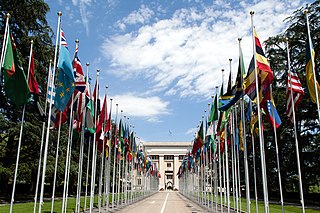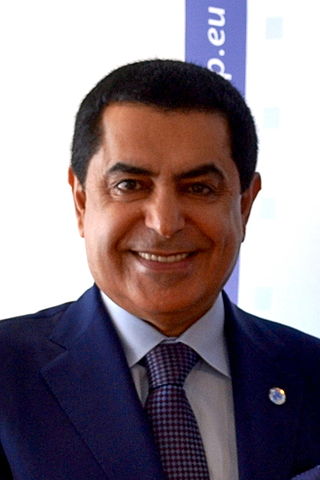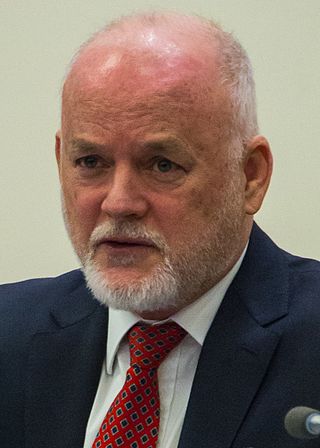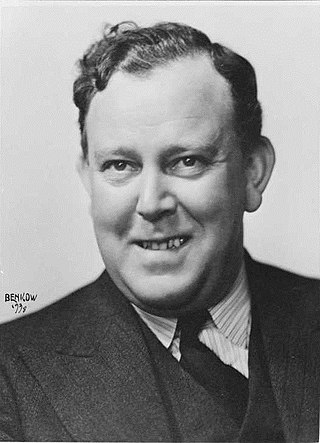
The United Nations General Assembly is one of the six principal organs of the United Nations (UN), serving as its main deliberative, policymaking, and representative organ. Currently in its 78th session, its powers, composition, functions, and procedures are set out in Chapter IV of the United Nations Charter.

The member states of the United Nations comprise 193 sovereign states. The United Nations (UN) is the world's largest intergovernmental organization. All members have equal representation in the UN General Assembly.

The headquarters of the United Nations (UN) is on 17 to 18 acres of grounds in the Turtle Bay neighborhood of Midtown Manhattan in New York City. It borders First Avenue to the west, 42nd Street to the south, 48th Street to the north, and the East River to the east. Completed in 1952, the complex consists of several structures, including the Secretariat, Conference, and General Assembly buildings, and the Dag Hammarskjöld Library. The complex was designed by a board of architects led by Wallace Harrison and built by the architectural firm Harrison & Abramovitz, with final projects developed by Oscar Niemeyer and Le Corbusier. The term Turtle Bay is occasionally used as a metonym for the UN headquarters or for the United Nations as a whole.

The United Nations System consists of the United Nations' six principal bodies, the Specialized Agencies and related organizations. The UN System includes subsidiary bodies such as the separately administered funds and programmes, research and training institutes, and other subsidiary entities. Some of these organizations predate the founding of the United Nations in 1945 and were inherited after the dissolution of the League of Nations.

The Inter-Parliamentary Union is an international organization of national parliaments. Its primary purpose is to promote democratic governance, accountability, and cooperation among its members; other initiatives include advancing gender parity among legislatures, empowering youth participation in politics, and sustainable development.
China is one of the members of the United Nations and is one of five permanent members of its Security Council. One of the victorious Allies of World War II, the Republic of China (ROC) joined the UN upon its founding in 1945. The subsequent resumption of the Chinese Civil War between the government of Republic of China and the rebel forces of the Chinese Communist Party, led to the latter's victory on the mainland and the establishment of the People's Republic of China (PRC) in 1949. Nearly all of Mainland China was soon under its control and the ROC government retreated to the island of Taiwan.

The United Nations General Assembly Resolution 2758 was passed in response to the United Nations General Assembly Resolution 1668 that required any change in China's representation in the UN be determined by a two-thirds vote referring to Article 18 of the UN Charter. The resolution, passed on 25 October 1971, recognized the People's Republic of China as "the only legitimate representative of China to the United Nations" and removed "the representatives of Chiang Kai-shek" from the United Nations.

The Dag Hammarskjöld Library is a library on the grounds of the headquarters of the United Nations, located in the Turtle Bay/East Midtown neighborhood of Manhattan in New York City. It is connected to the Secretariat and Conference buildings through ground level and underground corridors. It is named after Dag Hammarskjöld, the second Secretary-General of the United Nations. The library was founded in 1946, and the current library building was completed in 1961.
The United Nations issues most of its official documents in its six working languages: Arabic, Chinese, English, French, Russian and Spanish. Many are also issued in German, which in 1973 gained the status of "documentation language" and has its own translation unit at the UN. The official documents are published under the United Nations masthead and each is identified by a unique document code (symbol) for reference, indicating the organ to which it is linked and a sequential number. There are also sales publications with distinctive symbols representing subject categories, as well as press releases and other public information materials, only some of which appear in all the official languages.
The Holy See is not a member of the United Nations but was granted permanent observer state status on 6 April 1964. In that capacity, it has the right to attend all sessions of the United Nations General Assembly, the United Nations Security Council, and the United Nations Economic and Social Council to observe their work. Accordingly, the Holy See has established permanent observer missions in New York and in Geneva and has been able to influence the decisions and recommendations of the United Nations.

The Sixty-sixth Session of the United Nations General Assembly opened on 13 September 2011 at 15:00 and was presided over by former Qatari permanent representative to the UN Nassir Abdulaziz Al-Nasser. The session ended on 18 September as al-Nasser symbolically passed the gavel to the president of the next session, Vuk Jeremic.

The Sixty-eighth Session of the United Nations General Assembly opened on 17 September 2013. The President of the United Nations General Assembly was chosen from the GRULAC with Antigua and Barbuda's John William Ashe being the consensus candidate, thus bypassing the need for an election.

The Sixty-Ninth session of the United Nations General Assembly opened on 16 September 2014. The President of the United Nations General Assembly was chosen from the African Group with Uganda's Sam Kutesa being the unanimous African Union's Executive Council's candidate, thus bypassing the need for an election.

The Seventy-first Session of the United Nations General Assembly opened on 13 September 2016. The President of the United Nations General Assembly is from the Asia-Pacific Group.
United Nations Secretary-General selection is the process of selecting the next secretary-general of the United Nations. To be selected as secretary-general, a candidate must receive the votes of at least nine members of the United Nations Security Council, with no vetoes from permanent members. The secretary-general is then appointed by a majority vote of the United Nations General Assembly.

The United Nations Secretary-General selection of 1946 took place at the opening session of the United Nations in London. The General Assembly first voted on the membership of the Security Council, which then selected the first Secretary-General of the United Nations. The United States and the United Kingdom supported Lester B. Pearson of Canada for Secretary-General, but the Soviet Union opposed Pearson since the permanent headquarters of the United Nations would be in North America. The Security Council compromised on Trygve Lie of Norway, who had lost the election for President of the General Assembly to Paul-Henri Spaak of Belgium.
The 1973 United Nations International Convention on the Suppression and Punishment of the Crime of Apartheid was the first binding international treaty which declared the crime of apartheid and racial segregation under international law. It was adopted by the General Assembly on 30 November 1973 and came into force on 18 July 1976. It passed by 91 votes in favor, four against and 26 abstentions. 110 countries are currently parties to the convention, with 26 signatories.

The eleventh emergency special session of the United Nations General Assembly opened on 28 February 2022 at the United Nations headquarters. It addresses the Russian invasion of Ukraine. Maldivian politician Abdulla Shahid served as President of the body during this time.

The Permanent Mission of Turkey to the United Nations is the diplomatic mission of Turkey to the United Nations in New York. The Mission is represented by the permanent representative. The current Turkish permanent representative to the United Nations is Ahmet Yıldız.

The United Nations General Assembly Building is part of the headquarters of the United Nations in the Turtle Bay neighborhood of Manhattan in New York City. It contains the main assembly hall of the United Nations General Assembly, the main deliberative, policymaking, and representative organ of the United Nations (UN). The building was designed by a group of architects led by Wallace Harrison. It is connected to the other buildings in the UN headquarters, including the Secretariat Building and the Dag Hammarskjöld Library. Although the building is physically within the United States, it is exempt from some local regulations because the site is under UN jurisdiction.














